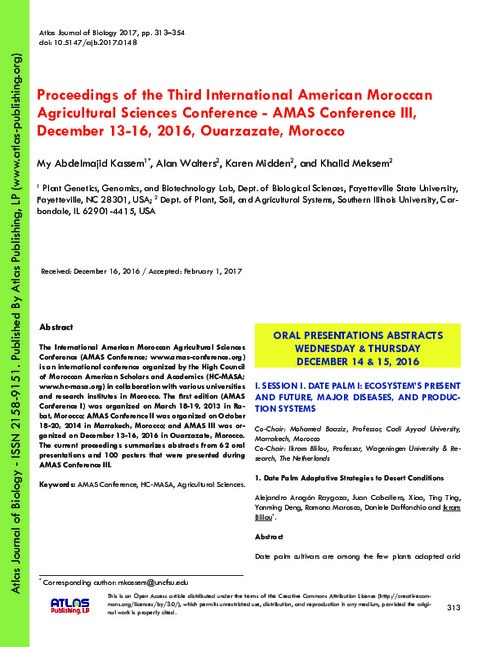Can Livestock Contribute to the Ecological Intensification of the Agriculture in the Oasis: A Case Study from the Drâa Valley?
Abstract
Recent developments in the global agriculture have been characterized by the emergence of the concept of ecological intensification, as a means to decrease the use of inputs and their impacts on the environment, while increasing and/or stabilizing crops and livestock yields. In the meantime, research studies have emphasized the ability of crops integration with livestock farming systems to adapt themselves to numerous stresses (economic, climate, etc.) in comparison to specialized systems with only crops or livestock. In the oasis, such integration has been traditionally achieved, as it has allowed for centuries the resilience of the cropping activities, in an environment characterized by numerous constraints, particularly frequent water shortages. However, this resilience has nowadays become challenged by increased stresses, above all climate change and its consequences and also social changes, with growing demands of the local population for better livelihoods. Therefore, in this study, the focus was on the ability of livestock to contribute to the ecological intensification of the farming systems adopted in the oasis. A sample of twelve (12) farms located in the oasis of the Drâa valley was selected and it was representing four types of livestock systems (i.e. 3 farms per system). A follow-up of farms was adopted to characterize inputs uses, water volumes and their origins (rainfall, surface irrigation and groundwater) and incomes from crops. The same methods were used for livestock production. In addition, work needs for crops and livestock were also measured, by determining the contribution of off-farm work uses. The results showed the importance of crop/livestock association in all the systems, in order to implement a sustainable farming activity. The intensification of livestock systems (retrieved in farms with prominent off-farm feed uses, i.e. D’man breed flocks and dairy cattle) showed the best incomes from crops, and that was mostly remarkable for date palms, which benefitted from the surplus irrigation of the underlying alfalfa, as well as manure from the herds. In the contexts where agriculture intensification was not feasible (due to water, land or capital scarcity), livestock remained the main source of incomes, adding value to vast pastoral areas (as in the area of M’hamid EL Ghizlane) and to crop by-products (mainly date wastes). Altogether, the results imply the need of further research devoted to the performances of the farming systems in the oasis, and the use efficiency of scarce inputs, such as water, land and work

